| REF: | 15524_313362 |
| DATE: | 09 - 13 Mar 2025 13.Mar.2025 |
| LOCATION: |
Online |
| INDIVIDUAL FEE: |
2500 Euro |
Introduction:
Disaster risk information is spatial and Geographic Information Systems (GIS) play an important role in disaster risk management. Rapid population growth and urbanization combined with extreme climatic events are causing a rapid increase in the vulnerability of communities exposed to hazardous events. Natural disasters inflict severe damage on almost the entire spectrum of social and natural habitats, ranging from housing and shelter, water, food, health, sanitation, and waste management to information and communication networks, supply of power and energy, and transportation infrastructure. There is a great need to utilize disaster risk information in planning for effective coping mechanisms for disaster risk reduction.
Targeted Groups:
The training is intended for:
- professionals working in development areas mostly in DRM-related fields.
- Managers of institutions and companies.
- Managers of crisis and risk management departments.
- Workers in the field of disaster and crisis management.
- Public relations and media workers because of their role in managing any crisis.
- Workers in the field of maintaining the security of institutions.
- Relief work crews.
- Those wishing to develop their capabilities in this field.
Training Objectives:
Upon completion of the course, the participants will be able to:
- Describe and utilize spatial data, GIS, and remote sensing in disaster risk assessment and management.
- Utilize existing sources of historical disaster information and elements at risk data.
- Apply GIS/remote sensing in hazard, vulnerability, and risk assessment.
- Employ risk information in emergency preparedness planning.
- Visualize hazard and risk information.
- Apply GIS/remote sensing to post-disaster damage assessment.
Targeted Competencies:
- Maintenance Planning (Planners, Schedulers, Engineers, Leaders, and Managers).
- Maintenance (Engineers, Supervisors, Section Leaders, Team Leaders, and managers).
- Reliability (Engineers, Section Leaders, Team Leaders, and Managers).
- Integrity (Engineers, Section Leaders, Team Leaders, and Managers).
- Operation (Engineers, Section Leaders, Team Leaders, and Managers).
Course Content:
Unit 1: Introduction:
- Basic GIS and RS concepts and terminologies in the context of disaster management.
- International and Regional Guidance: Protocols and action plans
- Introduction to spatial information
- Exercise: Handling spatial information:(Using Quantum GIS Software).
GIS data sources, data collection, and integration techniques for DRM:
- Data sources for DRM.
- Satellite image data sources for DRM.
- Task I: GPS /mobile phone GPS for HV field GIS data collection using ODK.
- Activity: GPS/mobile Course Tour.
- Exercise II: Handling spatial information II: GPS, GIS Integration using QGIS.
- Group discussions: How can GIS and RS be used for the identification of geographic areas affected by each natural hazard?
Unit 2: Hazard, vulnerability, and Risk assessment with GIS and RS (Pre-Disaster):
- Types and methods of risk assessment, risk evaluation, and cost-benefit analysis.
- Task II: Gentle Refresher of Microsoft Excel.
- Task III: Spatial data preparation and GIS integration techniques in Microsoft Excel.
- Use of GIS in disaster preparedness planning.
- Task IV: Elements at risk, hazard, and vulnerability assessment using GIS.
- Task V: GIS Multi criteria analysis in vulnerability assessment.
- Group discussion: How can GIS and RS be used to map existing buildings, infrastructure, land use, and critical facilities located in potential hazard areas?
Unit 3: Application of Risk Information for Risk Reduction Planning:
- Task VI: Visualization of risk information (Using QGIS/ILWIS/SAGA Software).
- Task VII: Risk mapping and database generation using Excel/QGIS and SAGA
- Task VIII: Disaster monitoring: satellite image processing techniques for change detection
- Exercise III: Creating a personal geodatabase for GIS emergency support manpower with personnel location information, contact information, and specialized skills.
- Exercise IV: Creating a risk map.
- Group discussion: Use of GIS and RS in the identification of the extent and magnitude of each hazard.
Unit 4: Introduction to Early Warning Systems and Information Networks (Pre-Disaster):
- Early warning systems and Information Networks for major hazards.
- Group discussion: How can GIS and RS be used in a Drought Early Warning System
- Disaster Impact Analysis (Post Disaster)
The use of satellite imagery for disaster relief and recovery:
- Activity: Visit a satellite data receiving and processing station depending on the location of training and availability of time.
- Group discussion: How can satellite images and aerial photos be used to locate refugees and internally displaced persons?
Unit 5: Public Participatory GIS and Disaster Risk Management (Pre and Post-Disaster):
- Participatory GIS as a tool for DRM mapping.
- Task IX: Using Google Maps and Google Earth in DRM.
- Exercise VI: SMS to Map for community crisis mapping.
- Group discussion: What GIS and RS tools are suitable for mapping urban (social) hazards such as crime zones, drug corners, and accident black spots?


